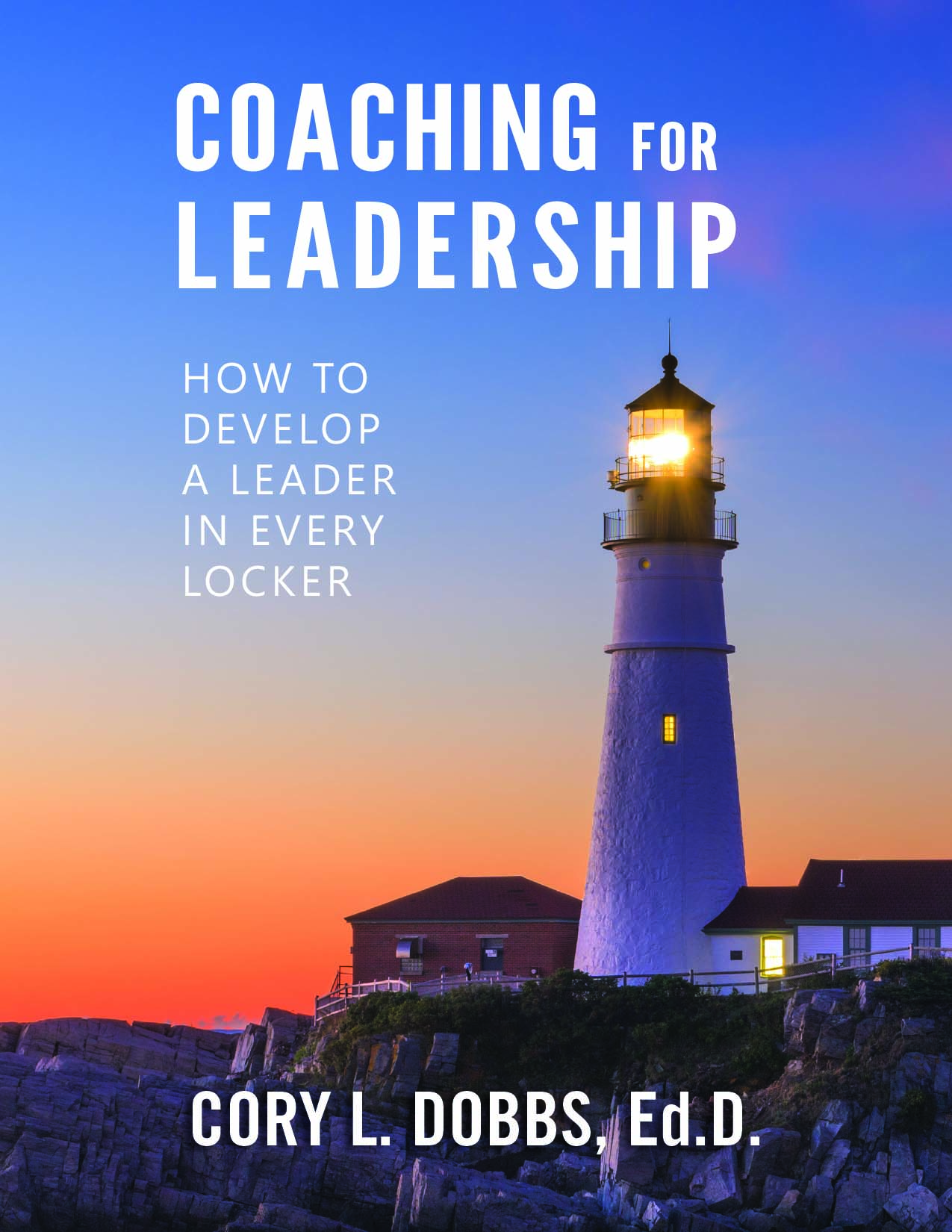
Submitted by by Cory Dobbs, Ed.D
You’ve likely heard the proverb that reads, “Give a man a fish, and you feed him for a day. Teach a man to fish, and you feed him for a lifetime.” From this lesson it follows that teaching a player to lead will feed her leadership growth for a lifetime. However, teaching leadership is far more complex than teaching someone to fish. So what do you do when there are no seven habits of this, or no five rules for that?
The truth is, the teaching and learning of leadership in a student-athletic environment is a messy pursuit. Peer-to-peer leadership is a demanding venture. For young emerging leaders tackling tough problems, even when the student-athlete is willing and able, is fraught with risk. When attempting to lead, student-athletes are likely to encounter a range of emotions that include, fear, uncertainty, and doubt. How you help them learn through these emotions will, in part, determine their effectiveness and success as a team leader.
Do you consider your responsibilities as a coach to include the role of a leadership educator? I hope you do. You have the perfect leadership laboratory for developing leaders. So what gives? Why do many programs fail to produce highly qualified leaders—for the immediate moment as well as life beyond sport?
It’s been my experience as an observer of many teams over the years that often what’s lacking for the budding leader is simply opportunity. Most coaches appoint team captains or assign the role based on some type of criteria (such as seniority). And likewise, a great many coach will in the final analysis suggest that they either had effective or ineffective internal (player) leadership.
Deep down, it’s one thing to say you value leadership from your players. It’s another thing to give them extensive opportunities to lead by creating developmental culture. If you had to choose, which would it be? Would you want a very successful season in terms of wins with a player or two along the way learning how to lead at a very elementary level, or a season where every player experiences deep leadership growth and development while winning half your games? Thankfully this doesn’t have to be an either or question, but it does require you to reflect deeply on what you’re doing as a coach. Hence the dilemma: how does a coach modify his or her coaching orientation to affect the leadership experience of their student-athletes?
Let me take a moment to separate leader from leadership. A leader is a person, and leadership is a process. Now, let me go out on a limb: leaders need leadership opportunities (processes) from which to learn and grow. So, if you find yourself saying at the conclusion of a season that you didn’t have any leaders, don’t focus solely on your players. Take a hard look at the process—the real opportunities your environment provided for your leaders to grow.
To develop effective team leaders a simple way of looking at performance will help. Leadership performance is a function of the interaction of ability and willingness; that is Leadership Performance = f(A,W). If either is inadequate leader performance will be underwhelming.
However, to maximize a leader’s growth and development you need to add opportunity to practice and perform to the equation. The revised leader development formula becomes Leader Development = f(A, W,O). Even though a student-athlete may be willing and able, they need opportunities to connect with the purpose of leadership in your team setting.
Anyone wanting to lead or become a team captain will gain a solid foundation through the various (variety and quantity) leadership activities available to them. So give your young athletes lots of opportunities to gain the experience of leadership.
“Tell me and I’ll forget. Show me and I may remember. Involve me and I will care.” -Your Student-Athlete The world of coaching is changing. In Coaching for Leadership you’ll discover the foundations for designing, building, and sustaining a leadership focused culture for building a high-performance team. To find out more about and order Sport Leadership Books authored by Dr. Dobbs including Coaching for Leadership, click this link: The Academy for Sport Leadership Books
About the Author
A former basketball coach, Cory’s coaching background includes experience at the NCAA DII, NJCAA, and high school levels of competition. While coaching, he researched and developed the transformative Becoming a Team Leader program for student-athletes. Cory has worked with professional athletes, collegiate athletic programs and high schools teaching leadership as a part of the sports experience and education process. Cory cut his teeth as a corporate leader with Fortune 500 member, The Dial Corp. As a consultant and trainer Dr. Dobbs has worked with such organizations as American Express, Honeywell, and Avnet.
Cory has taught a variety of courses on leadership and change for the following universities:
Northern Arizona University (Graduate Schools of Business and Education)
Ohio University (Graduate School of Education / Management and Leadership in Sport)
Grand Canyon University (Sports Marketing and Sports Management in the Colangelo School of Sports Business)








This is only one-third of the teaching/coaching involved. The other two parts include the “Lynchpin” (Stephanie Zonars) and the followers. As a coach, you must also train players who can follow the leader and can convince the rest of the team to follow along. I’ve had more success with this thinking rather than just training the “captains” to be leaders. The “lynchpin” is the main follower, but also encourages others to also follow. That allows “Quiet Leaders” to be successful . . . the fact that the lynchpin can be a great follower.
Captain: You know the play, 4-out & 1-in with a double screen.
Lynchpin: Oh yeah, I remember, I know this….come on everyone, this is easy. Let’s get setup.
Followers: OK . . . I trust you. Let’s go.